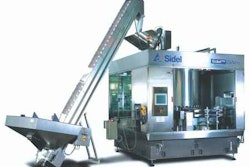
From an editorial in the Rocky Mountain News comes this: “There’s no credible link between injecting trace levels of carbon monoxide into beef and fish packages and health threats to the meat-eating public. Without that evidence, federal regulators should let the practice move forward.”
The piece continues:”The FDA approved CO as an enhancer in 2004. Injecting CO allows ‘case-ready’ fresh steaks and roasts to be packaged at the slaughterhouse rather than the supermarket. The markets can then hire fewer on-site butchers to keep the coolers stocked, which could restrain prices. In a sealed package, CO-enhanced beef can maintain its reddish hue even if it’s been left on a counter for days and not refrigerated. Critics say that ‘deceives’ consumers, who might be tempted to barbecue a gorgeous though spoiled rib eye. The thing is, much like spoiled milk, rancid meat stinks—and CO enhancement does not eradicate the odor. No less important, all fresh meat and fish continue to list expiration dates and proper handling instructions, including warnings about inadequate refrigeration. Consumers who follow the labels should be fine.”
Daren Comforth, Ph.D., a professor of nutrition and food sciences at Utah State U., had this to say in a piece published in the Desert Morning News: “Despite the fact that it is an innovative technology that benefits both consumers and processors, the use of CO meat packaging has been unfairly maligned. Opponents charge that it tricks consumers into thinking that spoiled meat is fresh and that the technology has not been sufficiently tested and thoroughly approved. In reality, the use of CO greatly extends the shelf life of meat products, reducing costs to consumers and ensuring that stores can remain fully stocked with products sought after by shoppers. In addition, it’s been in use in various countries for more than a decade and has been approved for use by the U.S. government on three separate occasions. It’s a win-win proposal for both consumers and retail stores.”


























